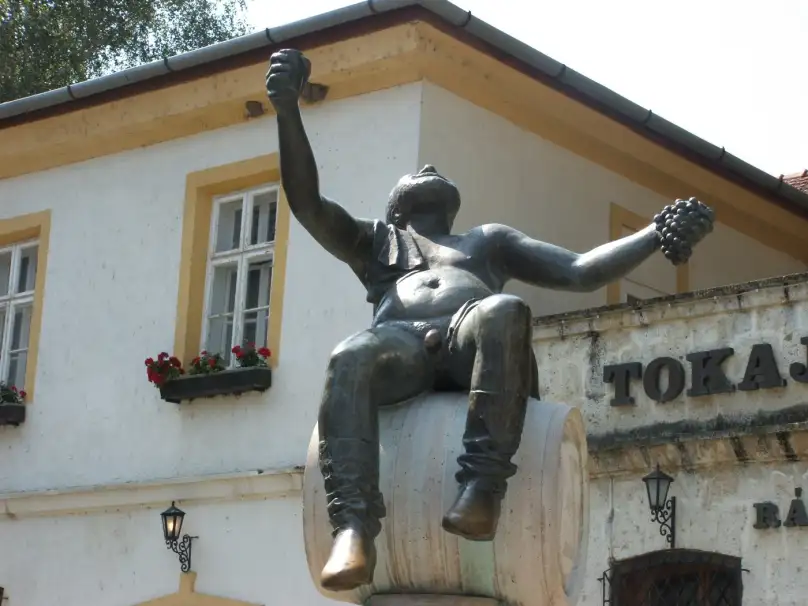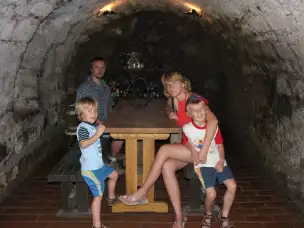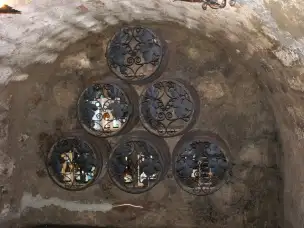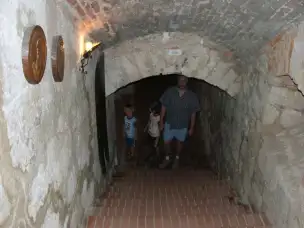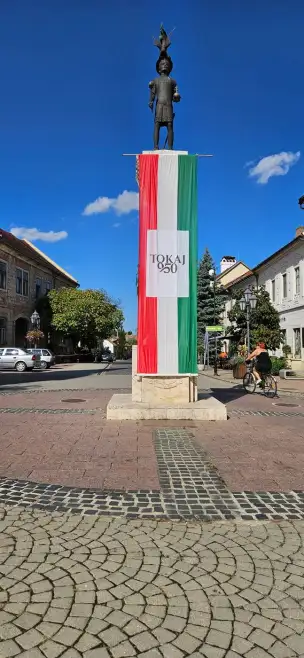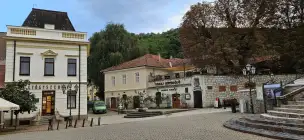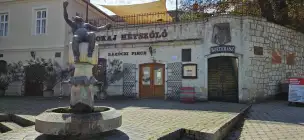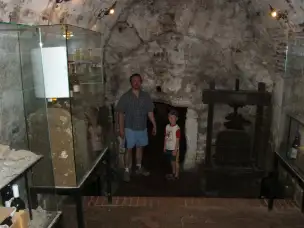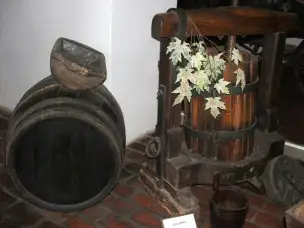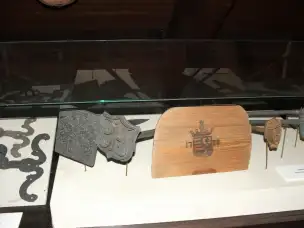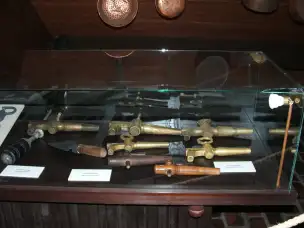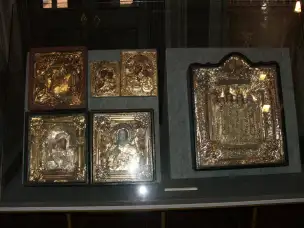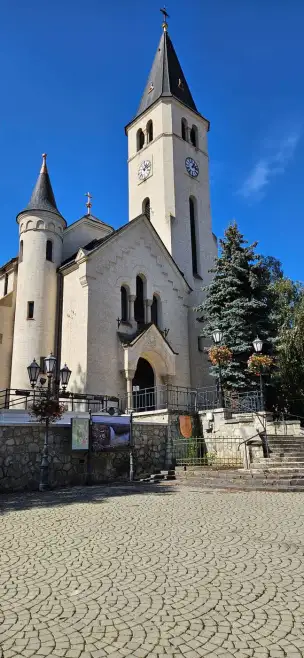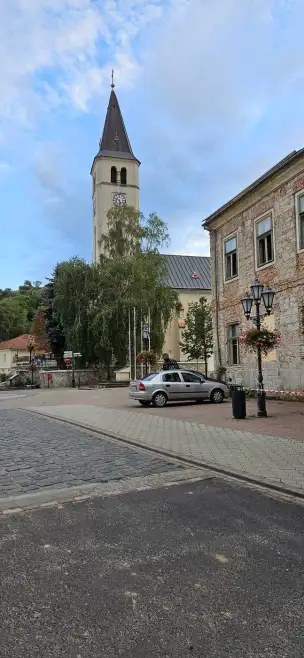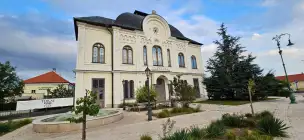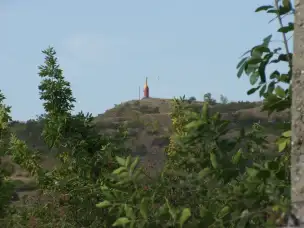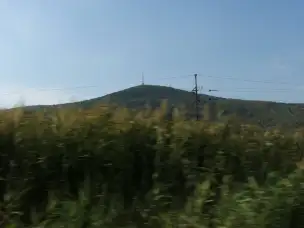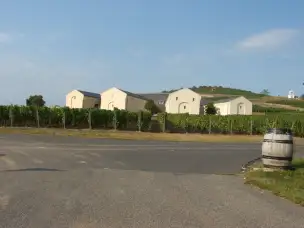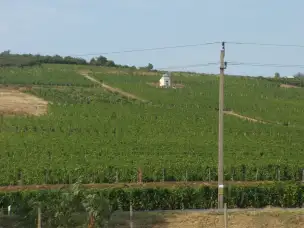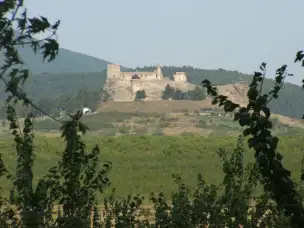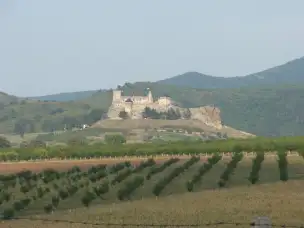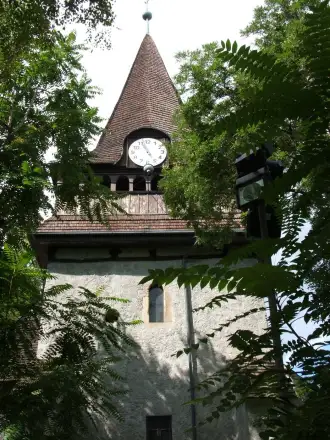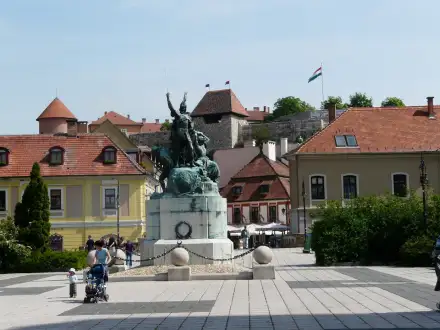One of the most important wine cities in the world, famous for producing Tokaj wine, which is considered one of the best and most luxurious wines globally.
It’s impossible to write about Tokaj without mentioning wine, so here it is: Tokaj produces good wine, and Tokaj wines are better than those from Eger. Whew.
I don’t know whether this opinion—honest but coming from a complete amateur in oenology—holds more or less weight than the opinions of various “Makłowiczs.” Although maybe Makłowicz isn’t the best example, since he seems to enjoy everything: he munches, smacks his lips, and gets enthusiastic.
But back to Tokaj. I’ve been there countless times and I do know a bit about wines.
The hallmark of this wine region is Aszú wines, sweetened with grapes that have been partially dried and frozen on the vine, harvested after the first frosts. The number of puttony shown on the labels of Tokaji Aszú bottles indicates how many buckets of these frozen grapes were added to the standard barrels.
The more puttony, the sweeter the wine, with a more intense flavor, darker color, and higher price. At Rákóczi Pince, I saw a 7-puttony Aszú, known as Aszú Eszencia, which costs up to 700 euros.
Tokaj is made primarily from the Furmint grape variety.
An interesting fact I learned from the BBC is that the British Court has been purchasing Tokaj wines for centuries. Their cellars are replenished every 50 years, and this tradition was not interrupted even by Hungary and Slovakia’s temporary existence behind the Iron Curtain.
Tokaj lacks a gastronomic and wine center like the Szépasszony-völgy (Valley of the Beautiful Women) in Eger, where cellars are concentrated in one valley. However, wine can be bought from many private houses that have their own pince (wine cellars). These houses are marked, and you can even negotiate with the owners in Polish.
The Town of Tokaj
The town of Tokaj is considered the cradle of Tokaj wine and has a rich winemaking history dating back to the 17th century. In Tokaj, you can find many beautiful vineyards producing Tokaj wine, as well as numerous historic landmarks such as Rákóczi Castle and the Church of St. Elizabeth.
Tokaj also hosts annual wine festivals, including the Grand Tokaj Wine Festival, where visitors can taste various Tokaj wine varieties and learn about the secrets of producing this magnificent drink.
Wines from the Tokaj Region
Wines from Tokaj are unquestionably the most prestigious and well-known Hungarian wines, with a history spanning hundreds of years and deeply rooted in Central and Western European culture. These wines have a unique character, distinguished by noble sweetness, complexity, and longevity.
Is Tokaj wine prestigious? Absolutely. Tokaji Aszú has been considered one of Europe’s most noble wines for centuries, mentioned in the same breath as French and German wines. Evidence of this includes:
- The phrase “Vinum Regum, Rex Vinorum” (“Wine of kings, king of wines”) attributed to King Louis XIV of France.
- Their presence in royal and ecclesiastical archives throughout Europe.
- Interest from a diverse range of figures such as Peter the Great, Mozart, Catherine Deneuve, and Joseph Haydn.
What Distinguishes Tokaj Wines?
Tokaji Aszú – the most valuable
- Made from grapes affected by noble rot (Botrytis cinerea), which concentrates sugars and aromas.
- The production process resembles French Sauternes but with local specifics (e.g., the puttonyos method).
- Flavors include honey, apricot, quince, spices, nuts, balanced by fresh acidity.
- Long-lived—good vintages can age for several decades.
Tokaji Szamorodni
- Made from bunches containing both healthy and botrytized grapes.
- Can be sweet or dry—the dry version is more unusual and challenging but highly prized by connoisseurs.
Furmint – the base grape of Tokaj
- Mainly grown in the Tokaj-Hegyalja region.
- Allows production of both sweet wines and increasingly valued dry white Tokaj wines (clean, mineral, citrus-herbal, with aging potential).
Where Has Tokaj Wine Been Consumed?
- The British Court has a centuries-old tradition of ordering Tokaj—since Tudor times, through Queen Victoria, to the present day.
- Austro-Hungary: The Habsburg emperors regarded Tokaj as a ceremonial wine (Tokaj was part of their domain).
- The Polish royal court (Sigismund III Vasa, Jan III Sobieski) imported it by the barrel—often supplied by merchants from Spiš and Košice.
- Tsarist Russia: Tsar Peter the Great and later Catherine the Great had special envoys in Tokaj overseeing wine quality—a “Tsars’ Road” was even built (a paved road for barrel transport).
- German and French courts also knew Tokaj and kept it in their cellars, though in the 19th century its popularity declined somewhat in favor of local sweet wines (Riesling, Sauternes).
Rákóczi Cellar
The Rákóczi Cellar in Tokaj is one of the oldest and most famous wine cellars in the Tokaj-Hegyalja region and an important part of Hungary’s winemaking heritage.
The name "Rákóczi Cellar" comes from the Rákóczi family, who ruled Tokaj in the 17th century. The cellar was where the finest Tokaji Aszú wines were served to members of the Rákóczi family, Hungarian kings, Transylvanian princes, and their distinguished guests.
Today, the cellar functions as a museum and wine tasting venue. It offers guided tours and tastings of various Tokaj wine varieties.
Tokaj Wine Heritage Museum
The museum was established to celebrate and document the rich history, traditions, and culture associated with winemaking in the Tokaj region. It attracts both wine enthusiasts and tourists interested in learning more about Tokaj. Exhibits showcase the tradition of vine cultivation, wine production techniques, tools used in winemaking, and the history of Tokaj as an important wine center.
Visitors can enjoy tastings of various Tokaj wines, including exceptional sweet Aszú varieties.
Church of the Sacred Heart of Jesus in Tokaj
The Church of the Sacred Heart of Jesus (Jézus Szíve templom) in Tokaj is a Roman Catholic church from the early 20th century, located in the very center of town at Kossuth Square (Kossuth tér 6). It was built in 1912 in the Neo-Romanesque style, designed by architect Lajos Zobel, replacing an earlier Baroque church that had fallen into ruin.
Synagogue in Tokaj
The former synagogue now serves as the Tokaj Cultural and Conference Center.
The first synagogue in Tokaj was built in the mid-18th century but was destroyed by fire in 1890. A new building was erected on the same site in an eclectic style with Moorish elements, featuring a dome and round dormer windows. It was one of the most impressive buildings in the town, with a capacity of about 1,000 people.
Surroundings of Tokaj
The Tokaj wine region is one of the most famous wine-producing areas in the world, located on the border of Hungary and Slovakia. It is especially renowned for its production of sweet Tokaji Aszú wines, which have been prized by European royal courts since the 17th century.
Tokaj Surroundings – Disznókő Vineyard
This 110-hectare vineyard area near Mezőzombor is one of the most favorable places in Tokaj for Aszú production. Since 1992, it has been producing noble sweet wines in a modern style.
At the Sárga Borház restaurant on the estate, guests can taste wines from Disznókő and other leading Tokaj wineries.
Boldogkőváralja – Near Tokaj
Boldogkő Castle is mentioned in a 1282 document as Castrum Boldua. According to local tradition, its name derives from a man named Bodó, who saved King Béla IV from pursuing Tatars.
The castle is currently managed by the local municipality.



